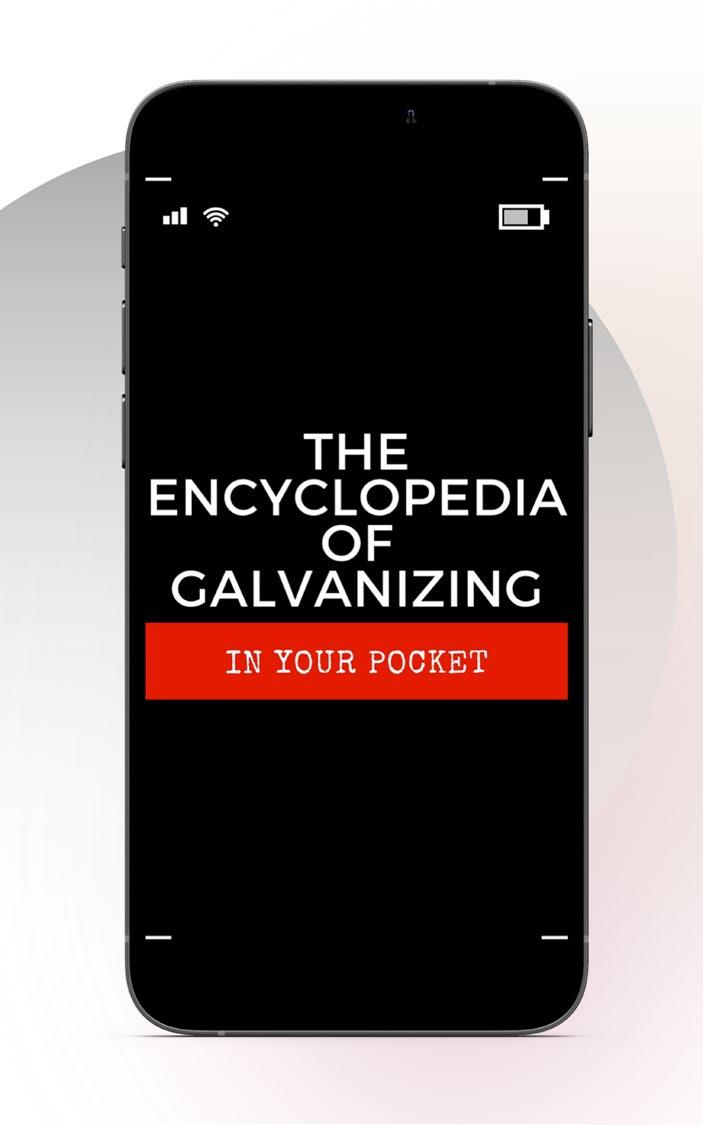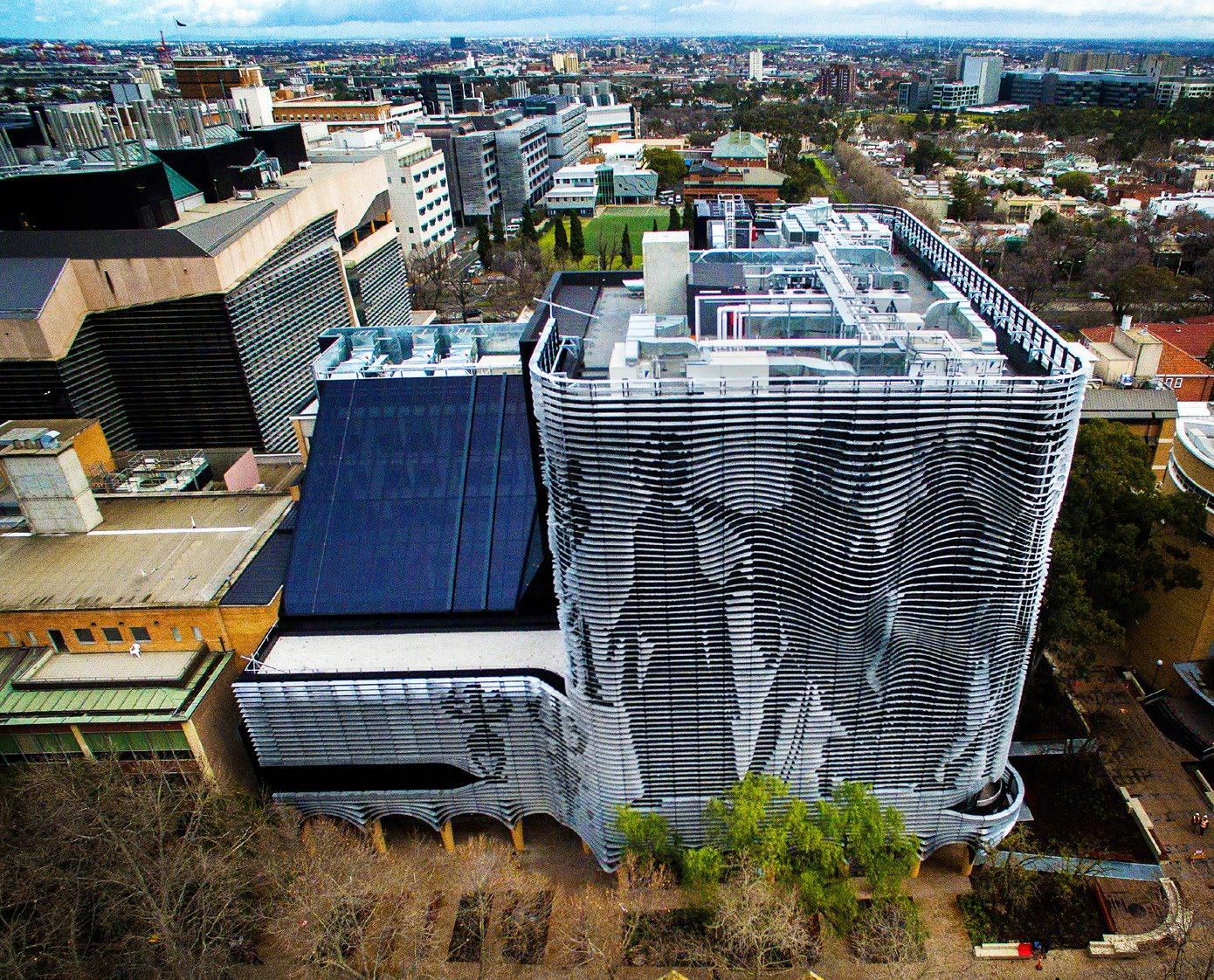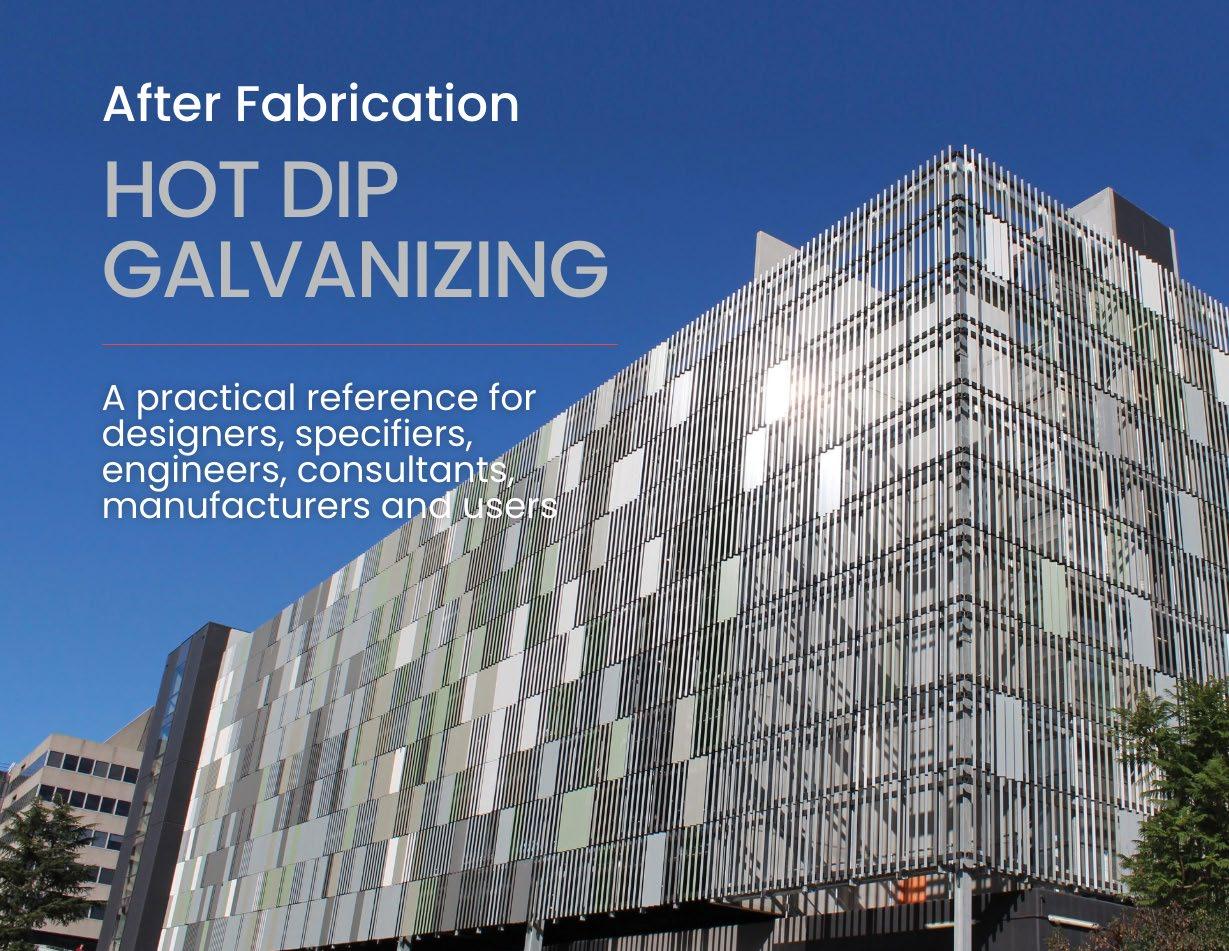
5 minute read
Protecting & Improving Steel: New Galvanizers Design Manual
THE GALVANIZERS ASSOCIATION OF AUSTRALIA (GAA) IS SET TO LAUNCH A NEW AND IMPROVED EDITION OF THE GALVANIZERS DESIGN MANUAL.
FIRST PRODUCED IN 1965 AND AVAILABLE ON CD SINCE 2008, THE DESIGN MANUAL HAS UNDERGONE A MAJOR REVISION PROCESS TO BRING ITS CONTENTS IN LINE WITH TECHNICAL AND TECHNOLOGICAL INNOVATIONS, AS WELL AS CHANGES IN AUSTRALIAN STANDARDS.
Advertisement
FOR INSTANCE, THE SECTIONS DEDICATED TO BOLTED STEEL STRUCTURES, PAINTING, SUSTAINABILITY AND DURABILITY HAVE ALL BEEN COMPLETELY OVERHAULED.
IN ADDITION, THE MANUAL WILL BE AN ENTIRELY ONLINE, HIGHLY INTERACTIVE REFERENCE TOOL COMPLETE WITH ASSETS SUCH AS 3D MODELS AND EMBEDDED REFERENCES. THE TRADITIONAL DOWNLOADABLE PDF FORMAT WILL STILL BE AVAILABLE, COMPLETELY FREE OF CHARGE.
GAA'S GALVANIZERS DESIGN MANUAL IS DESIGNED TO ASSIST DESIGNERS, SPECIFIERS, MATERIALS ENGINEERS, CONSULTANTS, AND FABRICATORS TO PROTECT AND IMPROVE THEIR STEEL PRODUCTS. ALL IMPORTANT ASPECTS OF THE GALVANIZING PROCESS AND THE PROPERTIES AND APPLICATIONS OF GALVANIZED COATINGS ARE COVERED. SECTIONS DETAIL THE DESIGN AND SPECIFICATION OF GALVANIZED PRODUCTS, FABRICATION METHODS INCLUDING BOLTING AND WELDING, GALVANIZED REBAR, AND THE PAINTING OF GALVANIZED STEEL SURFACES.
SUSTAINABILITY
One of zinc’s most exceptional qualities is its ability to protect steel from corrosion. Galvanizing protects steel by providing a physical barrier, as well as cathodic protection for the underlying steel, allowing the steel’s service life to be significantly extended.
GAA's updated Design Manual includes a new section dedicated to sustainability. It provides information on the Environmental Product Declaration (EPD) for Galvanizers Association of Australia: Hot dip galvanizing in Australia, including how and why to use the EPD.
According to Peter Golding (Chief Executive Officer, GAA), “Our EPD provides an independently verified representation of the environmental impact of the hot dip galvanized product going into your project. EPD data can be used to aid environmental assessment of building design and infrastructure projects, and to help obtain credits for Green Star and Infrastructure Sustainability rated projects across Australasia.”
“Attention to the durability of steel structures and components has important environmental, economic and social consequences. Some of these are less obvious than others. The overall economic cost of corrosion has been studied in several countries and is commonly estimated at around 4% of gross domestic product."
"By protecting steel from corrosion, galvanizing performs an invaluable service. It helps to save natural resources by significantly prolonging the life of steel and capital investments. The long-term durability provided by galvanizing is achieved at a relatively low environmental burden in terms of energy and other globally relevant impacts," said Golding.
DURABILITY
Three key Standards provide considerable information on the corrosion rate of steel and zinc under various conditions of atmospheric service: AS/NZS 2312.2 Guide to the protection of structural steel against atmospheric corrosion by the use of protective coatings Hot dip galvanizing; AS 4312 Atmospheric corrosivity zones in Australia; and SNZ TS 3404 Durability requirements for steel structures and components. Over the last few decades, the CSIRO, HERA and other industry organisations have carried out extensive mapping to establish the corrosivity of the Australian and New Zealand climate. Following on from this mapping, AS/NZS 2312.2 was updated in 2014 and is now the best source for the durability of galvanized coatings in Australian and New Zealand conditions. Likewise, AS 4312 is the best source of Australian data for corrosivity of steel in the local environment. The Design Manual now reflects both of these Australian Standards.
BOLTED STEEL STRUCTURES
The Galvanizers Design Manual provides an overview of the Australian Standards and industry best practice for bolted steel structures, structural fasteners and bolting techniques, design details, tightening procedures, inspection of fasteners and covers a range of selection of zinc coatings for bolts. It also provides additional notes about the influence of hot dip galvanized coating on design, particularly for slip factors, fatigue behaviour, bolt relaxation and torque and induced tension in tightening.
In recent years, there have been major revisions to the Australian Standards that cover bolted steel structures; AS/NZS 1252 High-strength steel fastener assemblies for structural engineering was revised in 2016. As a result, there have been follow-on updates to other related Standards such as AS/NZS 1214 Hot dip galvanized coatings on threaded fasteners to ensure consistency. The new version of the Design Manual takes all these Standard updates in account.
The Manual also includes a review of the recent European research on slip factors, showing the methods required to obtain an increased slip factor for galvanized steel structures.
Dr Peter Key (National Technical Development Manager, Australian Steel Institute) has led the development of updates to Standards before, most notably around AS/NZS 5131 for structural steelwork fabrication. “From time to time, we revise national Standards, as we uncover new information, data or circumstances that
require changes to the standard. It’s important to stay up-to-date and, with changes to a number of the Australian Standards that involve bolting, a guide like this one from Galvanizers Association can help keep you across the critical components,” said Key.
“In the case of AS/NZS 1252 High Strength Steel Bolts with associated nuts and washers for structural engineering, revision was necessary because most of the bolts are no longer made in Australia. As companies are still demanding that quality needs to be shown as a forethought across various building sites, it was necessary to better define product conformance and how to assess it in the Standard,” added Key.
PAINTING OR DUPLEX COATING
The painting of hot dip galvanized steel is an orthodox and well-proven practice in outdoor environments, both in Australia and internationally. The practice is commonly called ‘duplex coating’.
"The section dedicated to painting in the Design Manual has been completely revamped," said Golding. "It is now quite expansive and covers the standard paint systems from every major paint supplier in Australia and New Zealand," said Golding.
"There are examples of early failures of duplex coatings due to incorrect specifications and poor practice. The Design Manual aims to avoid such failures by directing specifiers and applicators to the paint systems, surface preparation and application practices that will provide a durable duplex coating in a broad range of service conditions."
ABOUT THE GALVANIZERS ASSOCIATION OF AUSTRALIA
The Galvanizers Association of Australia (GAA) comprises the leading galvanizing companies throughout Australia, New Zealand and parts of Asia. An industry association established in 1963, GAA represents galvanizing companies and provides technical consulting services on a not-for-profit basis.

GAA’s objectives are to provide the highest standards in design and quality of galvanized products, and to assist consumers achieve the economics inherent in the correct design and application of galvanized products. GAA provides free technical publications and practical assistance on all aspects of design, application, process, bolting, welding and painting of galvanized steel.
CLICK HERE FOR FURTHER INFORMATION AND TO ACCESS THE GAA'S GALVANIZERS DESIGN MANUAL >>>


